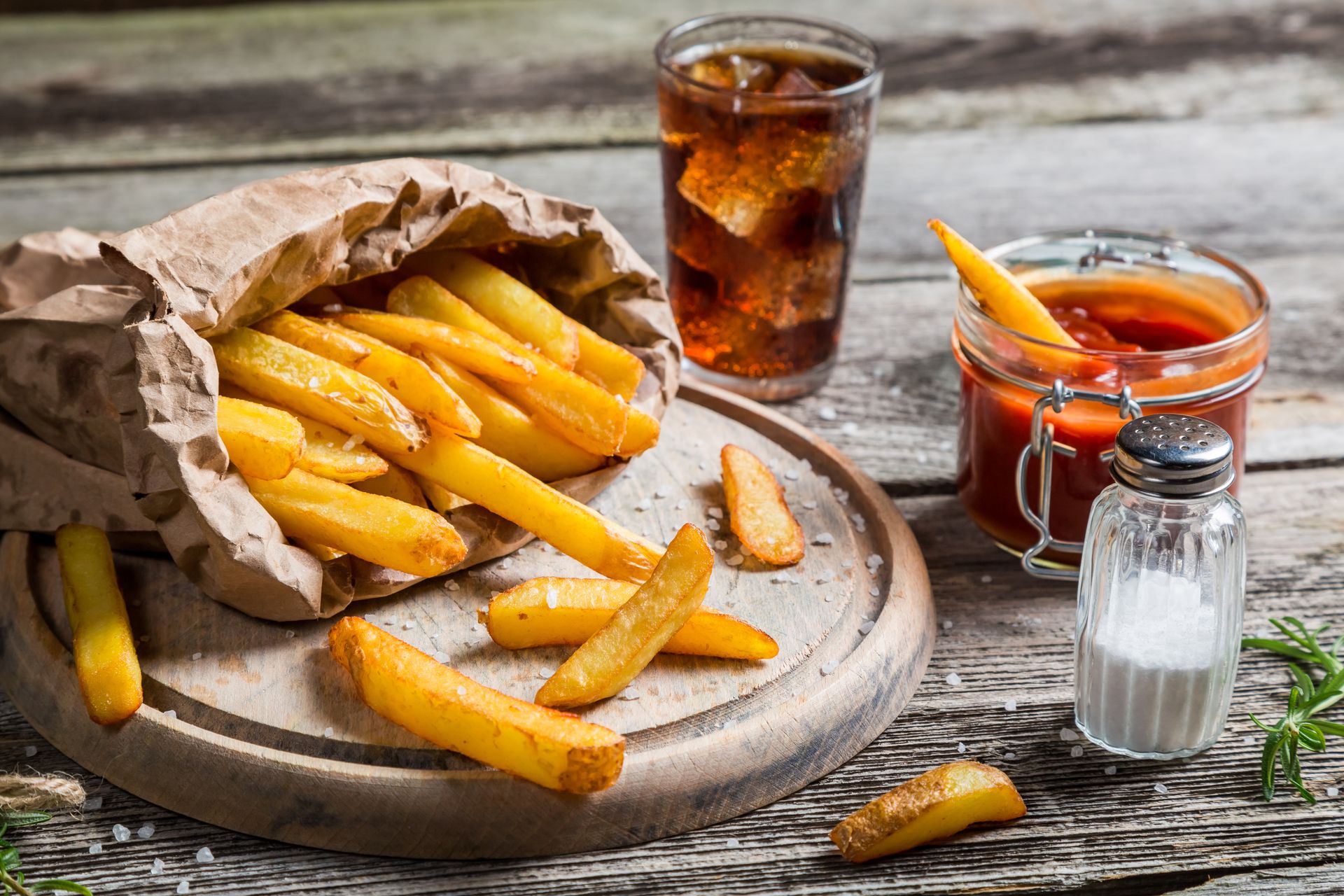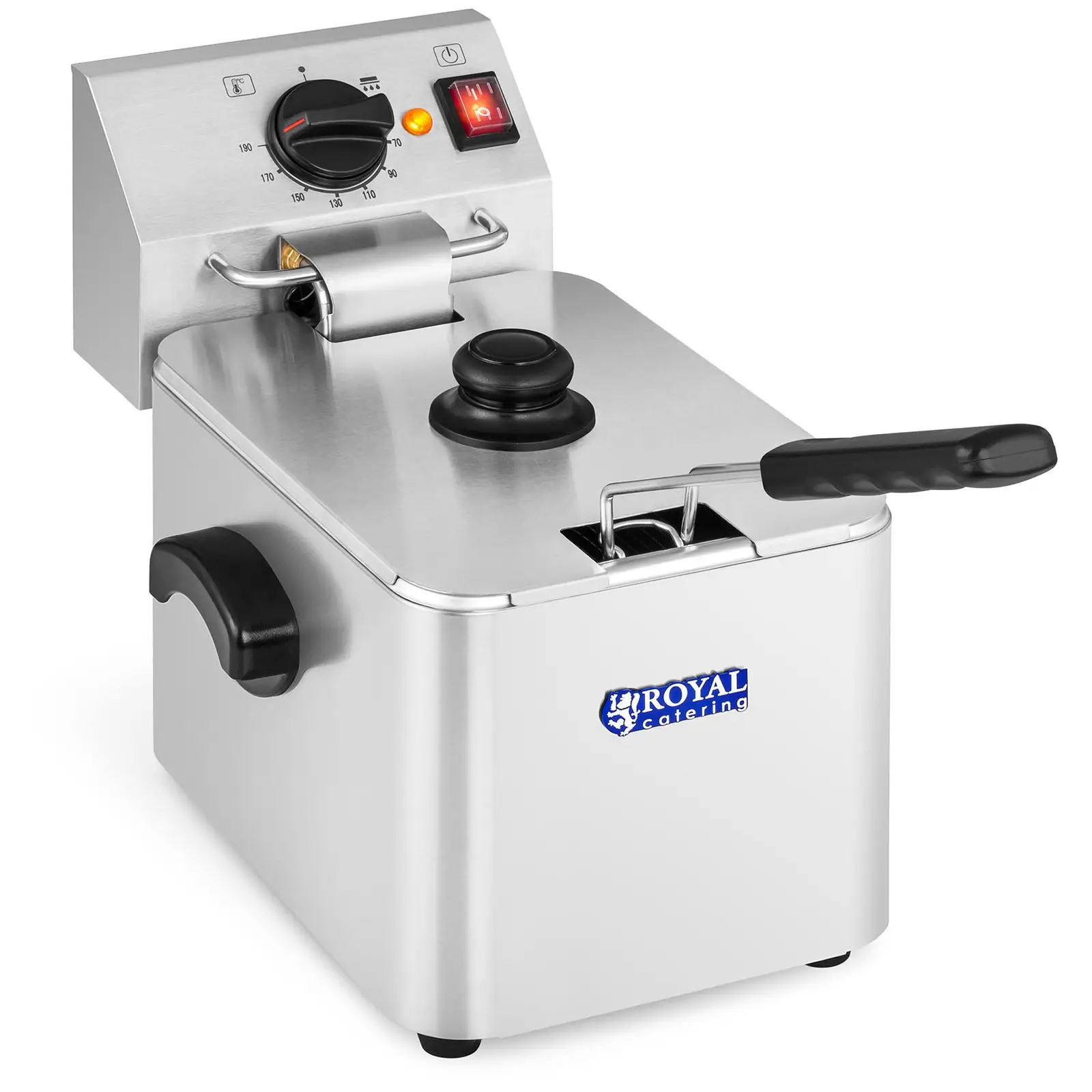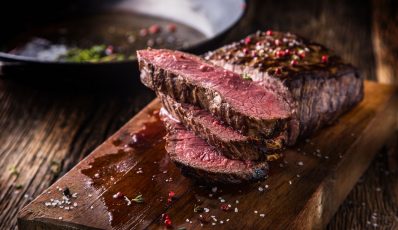Chips are a great addition to many dishes, but also go well on their own. How can you cook chips so that they are crunchy on the outside and soft on the inside? Which potatoes are best, and which frying temperature will give you the best effect?

Chips are a great addition to many dishes, but also go well on their own. How can you cook chips so that they are crunchy on the outside and soft on the inside? Which potatoes are best, and which frying temperature will give you the best effect?
Which varieties of potatoes should you choose for making chips?
Potatoes are amongst the most universal vegetables. They are used both in kitchens and also in industry, for example as an ingredient of fodder or spirits.
More than a hundred varieties are grown in Europe, where potatoes have been known since the end of the 16th century. There are three main types:
- type A potatoes – also called salad potatoes, they have a low starch content and stay compact after heat treatment,
- type B potatoes – popular for general use, they have more starch compared than type A, which means that they are less moist,
- type C potatoes – floury, contain the most starch, are powdery after preparation and have a relatively dry texture.
An additional distinction can be made between intermediate types, i.e. AB (salad and general use) and BC (general use, floury). Which potatoes will be best for making chips?
Type B plants are particularly recommended in this case. But why are they the best for cooking chips? This is because they are crunchy with a crisp crust when fried, but remain slightly moist and fluffy inside. Type A potatoes are better for using in salads, or as an addition to casseroles or soups. Type C potatoes, on the other hand, are intended rather for purées or preparing such dishes as potato dumplings or potato pancakes.
The type of potato is one thing, but there is still the question of variety. Which types will you find in a supermarket or at the greengrocer? Good varieties of potatoes for making chips include:
- Maris Piper,
- King Edwards,
- Rooster,
- Sante,
- Pentland,
- Dell,
- Russet,
- Cara,
- Romano
How can you tell if potatoes are good for making chips? First of all, pay attention to the appearance of the tuber. The skin should be as smooth as possible, without discolouration, or traces of rotting or damage that would indicate that the potato is in a poor state.
Another aspect to pay attention to is the colour. Potatoes for preparing chips or any other dish should have a light skin colour. Dark potatoes suggest intensive fertilisation and a high content of nitrates, which in small amounts are not harmful to your health, but in larger amounts may lead to vitamin A deficiency, irritation of the mucous membrane of the digestive system or the development of type 1 diabetes.
Also discard green tubers. This may be a signal that the potatoes contain a high concentration of solanine, a compound that leads to food poisoning. It is also best if the potatoes are of a similar shape and size, and their “eyes” are as shallow as possible (the potatoes will lose fewer vitamins and other ingredients when peeling).
If you already have tubers at home, you can easily check if they will be good for making chips. After slicing, start rubbing the halves together. If water starts to precipitate, it means you are dealing with type A potatoes, the type suitable for salads and soups.
Good potatoes for chips should start to let out starch when rubbed, and start to stick to each other a little bit. But not too much, as this could mean that you are dealing with a flour variety.
How should you prepare potato chips?
Choosing the right potatoes is the first step. But let’s move on to the second important aspect. How do you actually cook the chips?
In addition to the potatoes, you will also need:
- water,
- sugar,
- paper towels.
Start by peeling the potatoes. At home, a knife will be more than sufficient. After peeling the potatoes, rinse them under running water. If you run a restaurant and chips are an important part of your menu, you could consider investing in a professional potato peeler. It will significantly shorten the preparation process before frying the chips, and your staff will be able to concentrate on other tasks.
The next step is cutting the potatoes into chips, whichis one of the most important activities. If the pieces are too thin, the potatoes will quickly lose water and may become too burnt. If they are too large, they might not have a crispy crust after frying.
How to cut potatoes into chips? The optimal thickness of the pieces should be approx. 0.5 to 1.5 cm. In the case of a restaurant or a bar, a useful device will be a vegetable and fruit slicer, such as a potato cutter, in which you can set the preferred cutting thickness.
Pour cold water over the cut pieces of potato and wait until the liquid becomes cloudy. Pour the water out of the bowl and then rinse the potato pieces a few more times until the water is almost clear.
Add a teaspoon or two of sugar to the chips soaked in fresh, cold water (you could also pre-dissolve the sugar in a separate bowl, pouring boiling water over it). Leave the prepared potatoes for about half an hour.
Why is it worth going through so much trouble? This will allow the potatoes to rinse out excess starch, which is responsible for keeping the moisture in the vegetable. Fresh water will make the chips become soaked in double sugar, which will make them brown nicely and become crispy.
Drain the chips after soaking them in fresh water, and do not rinse them again. Wipe them down with a paper towel. If the pieces are dry, it will facilitate the frying process and oil will not splash out.
-
Potato Peeling Machine – 10 L – timer – up to 200 kg/h 1,299.00 €
-
Potato Peeler
-
Potato Slicer 119.00 €
-
Curly Fries Cutter 41.99 €
What type of oil should you choose for frying?
Oil for frying chips should have a high smoking point. This means that even when heated strongly, it will retain its original flavour and aroma.
Rapeseed oil has a high smoking point of 240 degrees Celsius, and is most often recommended as a suitable oil for frying chips. In addition to the parameters related to temperature, other advantages include a neutral taste and fairly easy drainage, which leads to a lower caloric content of the chips.
Rapeseed oil also has low saturated fatty acids, which are responsible for so-called bad cholesterol. And it is a source of unsaturated omega-3 and omega-6 fatty acids, which are important for your health and keeping your heart, kidneys and skin in good condition.
How should you fry chips?
You will need a suitable dish to fry the chips. It can be a frying pan with a high rim or a pot. The most convenient solution will be to use a deep fat fryer.
This type of device will allow you to quickly fry larger portions of chips. You can accurately control the temperature of the oil, while the heat in the fryer is distributed more evenly compared to standard cookware for general use. The basket in the fryer allows for better drainage from oil and is easier to use compared to, for example, a slotted spoon, because you can take out the entire batch of chips straight away.
How should you fry chips to make them crispy and golden? Pour the frying oil into the pan or fryer, enough to make sure the potatoes float rather than stick to the bottom.
The appropriate temperature for frying chips in the initial stage is approx. 150 degree Celsius. When the oil is hot, add the fries to the pot or deep fat fryer. After a few minutes, when the chips are slightly golden and glassy, take them out and drain them.
In the second stage, increase the frying temperature of the chips to approx. 180-190 degrees Celsius, then drop the chips into the oil again. After 5-10 minutes, they should turn brown and become crispy. Take them out and drain the fat again. The chips are now ready to serve.
Cooking chips – summary
Not only the final stage of cooking chips is important. Other aspects you will need to pay attention to are the right variety of potatoes and oil, and preparing the chips in water with sugar. This will have a direct impact on the taste, as well as the tenderness.







Share